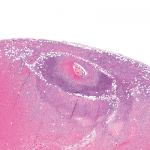Specifically, Dr. Liozon recommends physicians consider the following:
- Regularly ask these patients if they have cranial or ear, nose, and throat symptoms suggesting GCA;
- If they do, perform a careful examination of the temporal arteries, and perform a search for a bruit over axillary/humeral arteries. If any abnormalities are discovered, perform additional workups; and
- For any otherwise unexplained, persisting acute phase response in a patient with controlled or recovered PMR, order imaging of the patient’s aorta.
Dr. Liozon notes, “18F-FDG PET/CT is an effective imaging modality for detecting silent aortitis. Since [a] PET/CT scan often discloses the presence of large vessel vasculitis (LVV) in PMR patients, careful selection of those who really need it is crucial.”
Researchers also note that a “questionable female predominance was the only distinguishing feature of PMR or peripheral arthritis evolving into GCA,” but this should not necessarily affect practice.
“Although we found a strong association between female sex and the risk of late GCA, this finding may be inconsistent since the control cohort of PMR patients recruited in internal medicine was highly biased toward male patients,” Dr. Liozon says. “Accordingly, this should have no practical implication for clinicians who care for PMR patients.”
Dr. Liozon had the following advice for discussing risks with patients: “Both [general practitioners] and rheumatologists should educate their PMR patients about the main cranial symptoms and signs of GCA, while stressing the low frequency of such an occurrence so as not to worry them unnecessarily. No additional testing is needed, since both PMR and GCA flares are best diagnosed upon raised ESR and CRP, along with a complete blood count.”
Kimberly J. Retzlaff is a freelance medical journalist based in Denver.
References
- Liozon E, de Boysson H, Dalmay F, et al. Development of giant cell arteritis after treating polymyalgia or peripheral arthritis: A retrospective case-control study. J Rheumatol. 2018 Mar;45(5):678–685.


